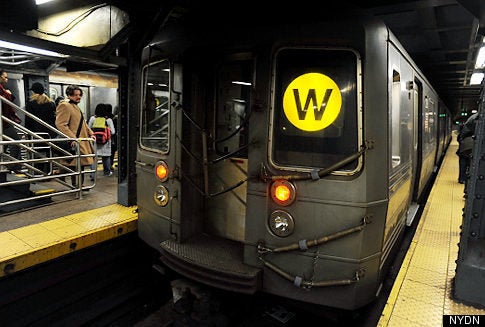
As I squeezed myself onto the packed subway car this morning my heart sank with despair; not because I was going to forfeit all claims to my personal space for the rest of the ride, but because the crowded train would not even exist come June.
Well, might not exist. In the face of a looming and unexpected budget deficit, the MTA Board voted in December to approve a series of service cuts that would begin in June of 2010. The cuts include the train that I took to work this morning, the M train in Brooklyn. Also on the chopping block are the W and Z trains, several bus routes, free fares for NYC schoolchildren, and paratransit service for the disabled.
But these service cuts don't have to happen; New Yorkers have a choice. By charging drivers a fee for driving into the central business district, we can prevent these crippling service cuts and ensure that the MTA has a stable source of revenue for years to come.
While a congestion charge would impose costs on those commuters that choose to drive (only 5 percent of working New Yorkers drive into the central business district), the economic, social, and environmental benefits of congestion pricing would far outweigh these costs.
Congestion pricing would raise $500 million a year for mass transit, more than enough to prevent the proposed service cuts and cover the MTA's current budget shortfall. Congestion pricing would provide the MTA with a stable source of revenue and end it's reliance on costly borrowing. Instead of seeing vital train and bus service disappear, we could instead be talking about new transit lines to underserved neighborhoods. New development, opportunities for affordable housing, and job creation would surely follow any new transit lines.
Second, a congestion charge would save the city's economy billions of dollars by reducing the $8.1 billion wasted every year in travel delay and fuel consumption. While drivers may be upset about the toll, they will be undoubtedly pleased when their travel speed has increased by 20-25 percent. Once a congestion charge is in place, there would be an immediate and perceptible drop in traffic congestion as drivers switch to transit or make their trips during off-peak hours, resulting in savings of $2.5 billion.
Third, congestion pricing would result in cleaner air and fewer pollution-related illness. A recent survey of the city's air quality linked pollution-related illness to heavy volumes of automobile traffic. As a result of poor air quality, children in New York City are almost twice as likely to be hospitalized for asthma as the national average, and a 2003 study found that the cost of asthma hospitalization was $242 million a year.
Our state legislators have the power to prevent the proposed service cuts. By implementing congestion pricing, the city would reap the rewards of improved transit service, faster travel times, increased productivity, and a healthier environment. There will be costs, but these costs will be borne largely by high-income individuals that choose to drive. The benefits, however, will be shared by everyone.